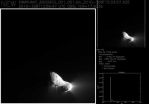(Press-News.org) There are disorders and conditions that entail increased itching and can be extremely troublesome for those suffering from it. The mechanisms behind itching are not well understood today. For one thing, what is it about scratching that relieves itching?
In the current study, which was performed on mice, the research team led by Professor Klas Kullander at the Department of Neuroscience examined the nerve cells that transfer heat pain. When these nerve cells had lost its capacity to signal, the mice reacted less to heat, as expected, but surprisingly they also started to itch incessantly.
"These findings link together pain from a burn with regulating sensitivity to itching, which was highly surprising and interesting," says Klas Kullander.
Extreme itching is very unpleasant and difficult to treat. For example, it is a common complication following operations and burns. Eczema and other skin disorders can also lead to general itchiness. Greater knowledge of the underlying factors paves the way for developing new forms of treatment for itching, for example, activating pain fibers to reduce itching, which is supported by these findings.
"In the long run, and with the help of more research, we will hopefully be able to fully elucidate what nerve fibers conduct the itching itself, and then we will be able to extinguish the itch at the source," says Klas Kullander.
INFORMATION:
Reference: Malin C. Lagerström, Katarzyna Rogoz, Bjarke Abrahamsen, Emma Persson,Björn Reinius,Karin Nordenankar,Caroline Ölund,Casey Smith,José Alfredo Mendez,Zhou-Feng Chen,John N. Wood, Åsa Wallén-Mackenzie, Klas Kullander. VGLUT2-Dependent Sensory Neurons in the TRPV1 Population Regulate Pain and Itch, Neuron, Volume 68, Issue 3, 529-542.
Burning pain and itching governed by same nerve cells
2010-11-05
ELSE PRESS RELEASES FROM THIS DATE:
UMD-led deep impact spacecraft successfully flies by comet Hartley 2
2010-11-05
COLLEGE PARK, Md. – The University of Maryland-led EPOXI mission successfully flew by comet Hartley 2 at 10 a.m. EDT today, and the spacecraft has begun returning images. Hartley 2 is the fifth comet nucleus visited by any spacecraft and the second one visited by the Deep Impact spacecraft.
Scientists and mission controllers are studying never-before-seen images of Hartley 2 appearing on their computer terminal screens. See images at: http://epoxi.umd.edu/
"We are all holding our breath to see what discoveries await us in the observations near closest approach," said ...
Researchers unlock the secret of bacteria's immune system
2010-11-05
Quebec City, November 4, 2010—A team of Université Laval and Danisco researchers has just unlocked the secret of bacteria's immune system. The details of the discovery, which may eventually make it possible to prevent certain bacteria from developing resistance to antibiotics, are presented in today's issue of the scientific journal Nature.
The team led by Professor Sylvain Moineau of Université Laval's Department of Biochemistry, Microbiology, and Bioinformatics showed that this mechanism, called CRISPR/Cas, works by selecting foreign DNA segments and inserting them ...
A 'brand' new world: Attachment runs thicker than money
2010-11-05
Can you forge an emotional bond with a brand so strong that, if forced to buy a competitor's product, you suffer separation anxiety? According to a new study from the USC Marshall School of Business, the answer is yes. In fact, that bond can be strong enough that consumers are willing to sacrifice time, money, energy and reputation to maintain their attachment to that brand.
"Brand Attachment and Brand Attitude Strength: Conceptual and Empirical Differentiation of Two Critical Brand Equity Drivers," a study published in the November issue of the Journal of Marketing, ...
X-rays offer first detailed look at hotspots for calcium-related disease
2010-11-05
Menlo Park, Calif.—Calcium regulates many critical processes within the body, including muscle contraction, the heartbeat, and the release of hormones. But too much calcium can be a bad thing. In excess, it can lead to a host of diseases, such as severe muscle weakness, a fatal reaction to anesthesia or sudden cardiac death.
Now, using intense X-rays from the Stanford Synchrotron Radiation Lightsource (SSRL) at the Department of Energy's SLAC National Accelerator Laboratory, researchers have determined the detailed structure of a key part of the ryanodine receptor, a ...
Colonic navigation
2010-11-05
Nanoparticles could help smuggle drugs into the gut, according to a study published this month in the International Journal of Nanotechnology.
There are several drugs that would have more beneficial therapeutic effects if they could be targeted at absorption by the lower intestine. However, in order to target the colon for treating colon cancer for instance, medication delivered by mouth must surmount several barriers including stomach acidity, binding to mucus layers, rapid clearance from the gut, and premature uptake by cells higher up the gastrointestinal tract. Being ...
Helical CT scans reduce lung cancer mortality by 20 percent compared to chest X-rays
2010-11-05
PROVIDENCE, R.I. [Brown University] — In a major new study announced today by the National Cancer Institute, researchers including Brown University biostatistian Constantine Gatsonis and his colleagues found that screening for lung cancer using helical CT scanning reduced lung cancer deaths by 20 percent compared to using chest X-rays.
"The findings we're announcing today offer the first definitive evidence for the effectiveness of helical CT screening smokers for lung cancer " said Gatsonis, a lead biostatistician in the study and director of the American College of ...
Motor Neurone Disease Association study identifies MND biomarker
2010-11-05
A study funded by the Motor Neurone Disease (MND) Association, in collaboration with the Medical Research Council (MRC), has identified a common signature of nerve damage in the brains of MND patients.
The study's exciting findings have been published in the prestigious journal Neurology (2 November 2010). These are the first results to be published from the ongoing Oxford Study for Biomarkers in MND/ALS (BioMOx).
MND research is being held back by the lack of an early diagnostic test and predictable markers of the progression of the disease – biomarkers. Patients ...
The mind uses syntax to interpret actions
2010-11-05
Most people are familiar with the concept that sentences have syntax. A verb, a subject, and an object come together in predictable patterns. But actions have syntax, too; when we watch someone else do something, we assemble their actions to mean something, according to a new study published in Psychological Science, a journal of the Association for Psychological Science.
"There are oceans and oceans of work on how we understand languages and how we interpret the things other people say," says Matthew Botvinick of Princeton University, who cowrote the paper with his ...
AGU Journal highlights -- Nov. 4, 2010
2010-11-05
The following highlights summarize research papers that have been recently published in Geophysical Research Letters (GRL), Journal of Geophysical Research - Atmospheres (JGR-D), and Journal of Geophysical Research - Earth Surface (JGR-F).
1. Exploring climate patterns linking stratosphere, lower atmosphere
Roughly every 28 months, the zonal winds in the stratosphere at the equator cycle from easterly to westerly and then back to easterly. Known to atmospheric scientists as the quasi-biennial oscillation (QBO), these shifting wind patterns result when the energy from ...
Discovery shows promise against severe side effects
2010-11-05
November 4, 2010 – (BRONX, NY) -- A team of scientists has found a way to eliminate a debilitating side effect associated with one of the main chemotherapy drugs used for treating colon cancer. The strategy used in their preclinical research—inhibiting an enzyme in bacteria of the digestive tract—could allow patients to receive higher and more effective doses of the drug, known as CPT-11 or Irinotecan.
The study, spearheaded by scientists at the University of North Carolina at Chapel Hill and involving collaborators at Albert Einstein College of Medicine of Yeshiva University ...

